Thailand’s electrical system is 220V at 50Hz and Thailand uses Type A and Type C electrical plug types. If you’re still confused, keep reading and we’ll explain.
If you are visiting Thailand from the Americas (North, Central, or South) there’s a good chance that most of your electronics operate on 110V electricity. Almost everywhere else in the world runs on 220V electricity (a notable exception being Japan which runs on 100V) and the products sold in those countries typically are designed to run on 220V.
Fortunately, more and more electronics sold today can handle both 110V or 220V interchangeably, with the biggest consideration being the type of plug that you plug into the wall socket.
However, please make sure you check, especially if you’re bringing products designed for the Americas. If you have a brick looking device on your power supply cord, chances are that, that brick will tell you what kind of electrical input the product can handle.
But don’t just assume that because you have a brick looking device on your power cable that you’re ok. You could cause serious damage to your electronics, yourself, and-or the electrical system that you’re plugging into.
What Electrical Input Are My Electronics?
Below you can see an Apple notebook power cable. You’ll notice that it says, “Input: 100-240V ~1.5A 50-60Hz”. That indicates that it can run on voltage ranging from 100V all the way up to 240V. You would be safe plugging this in almost anywhere.
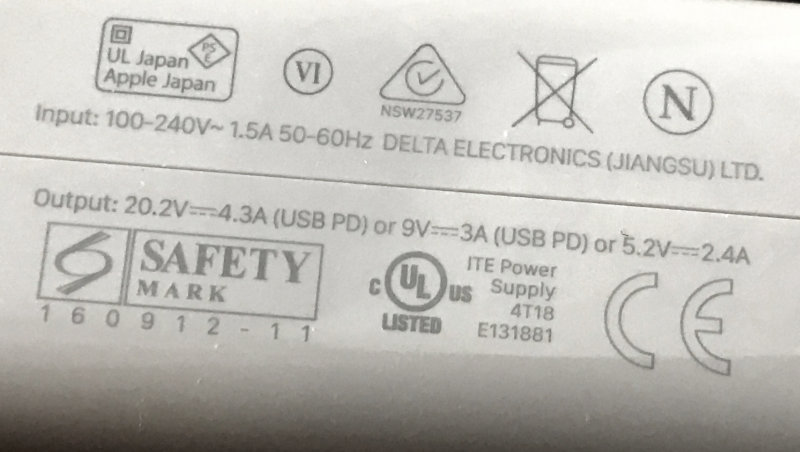
If your electronic device indicates that it can only handle up to 110V or 120V you will not be able to use it in Thailand without getting something called a step-down converter. You can find products like this at electrical stores or online at Amazon.
However, as a matter of practicality (and potentially safety), it’s not recommended you use a step-down converter. Many devices rated for 110V may not deal well with a step-down converter’s output or the converter itself may not be up to the task and can overheat. Given that most of the devices rated for 110V only tend to be things like hair dryers or other items that need to generate heat (e.g. hair straighteners), it’s often easier and safer to simply buy one that is dual voltage or buy a cheap one upon arrival.
Electrical Plugs in Thailand
Beyond making sure that your electronics can handle the voltage used in Thailand, you’ll need to make sure that you can plug your electronics into the wall socket.
Given that most modern electronics can handle both 110V and 220V, getting the plug right is usually the biggest issue travelers have when dealing with electronics in Thailand.
There are currently 15 different types of plugs used around the world, designated by the letters A through O. In the US, types A and B are used. In Europe, South America, and Asia you’re more likely to find a Type C plug/socket.
Thailand uses a hybrid and depending on where you’re at, it may be Type A, Type C, a combination Type A and C, or even a combination Type A, B and C socket.
Confused?
Yes, it can be a little confusing and unfortunately you won’t really know what kind of socket you’re going to have in your hotel room or at the coffee shop until you arrive.
The image below is of a commonly found electrical socket in Thailand. It is a combination of a Type A, Type B, and Type C socket.
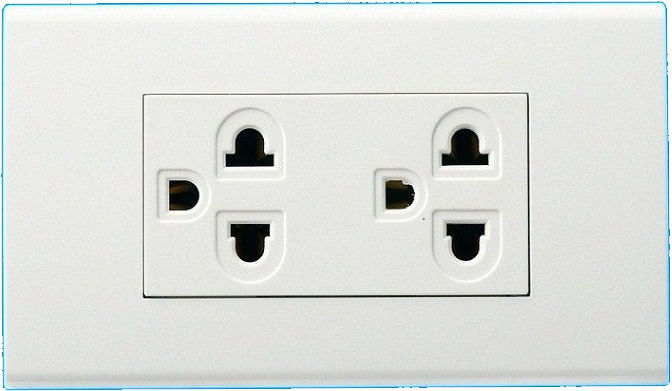
It takes Type A flat plugs (see below)
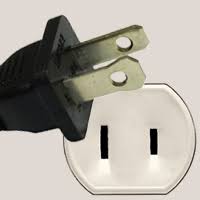
It can also take Type B flat plugs with a ground (see below).
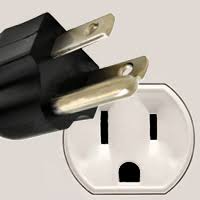 

And it can take a Type C, rounded plug (see below).
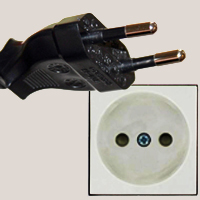 

However, it is not unheard of to find Type C only plugs in Thailand.
And not all sockets that take Type A plugs will take Type B plugs as some sockets lack a grounding socket (for the bottom prong on a thee-prong plug).
So what do you do if you have a three-prong plug (Type B) but you have a two-prong socket?
Well, you certainly don’t want to yank off the third prong. Buy an adapter that will convert your three prong plug into a two prong plug.
Do realize that the lack of a third socket means that your electronics are not grounded and could be susceptible to power surges.
One trick that many travelers use is to bring a surge protection power strip from their home country (the ones in Thailand are not always up to overseas standards). Then, you only need one adapter to plug into the wall socket and you have 3 – 6 electrical sockets that do not need any sort of adapter.
Overall, the electricity in Thailand is pretty good. There are no statistics for quality of electrical service but it’s not something that you often hear people complain about.
However, you should keep in mind that the job of the electrical company is to deliver power to the property line. From there, you’re relying on building contractors to wire things correctly.
If you’re saying in a 4-star hotel in Bangkok chances are pretty good everything is up to spec. If you’re staying in a 500 baht a night room in a rural area of the country, well, let’s just say you’re taking a much larger leap of faith that things were done correctly.
To sum it up:
Check that your electronics can handle 220V
Make sure you bring the proper adaptors for your plugs
Consider bringing your own power strip to minimize the number of adaptors you need
Be conscious that while you probably have nothing more to worry about in Thailand than you do back home, the less developed the building you’re staying in the more careful you should be about the electrical standards.
